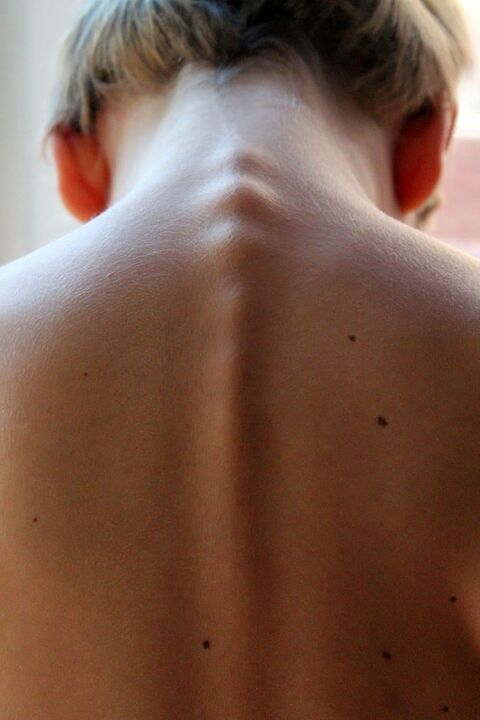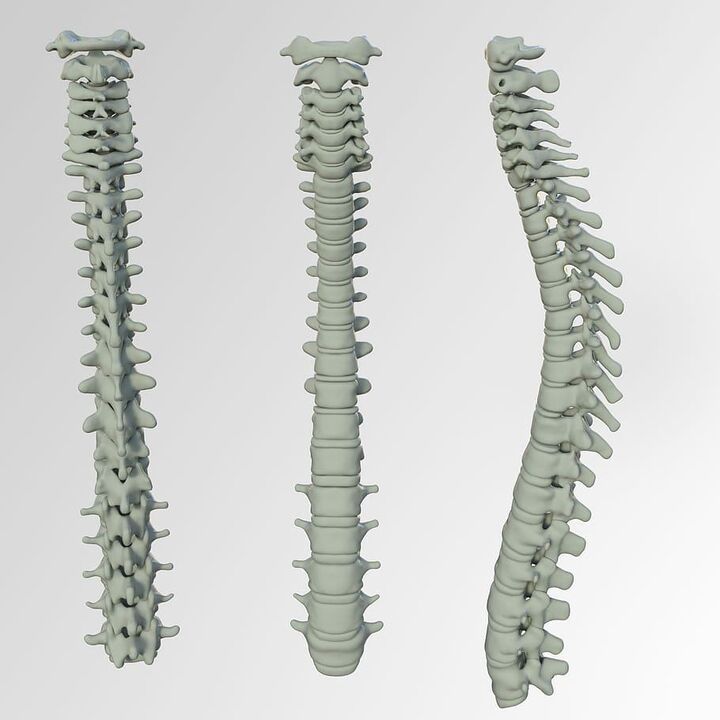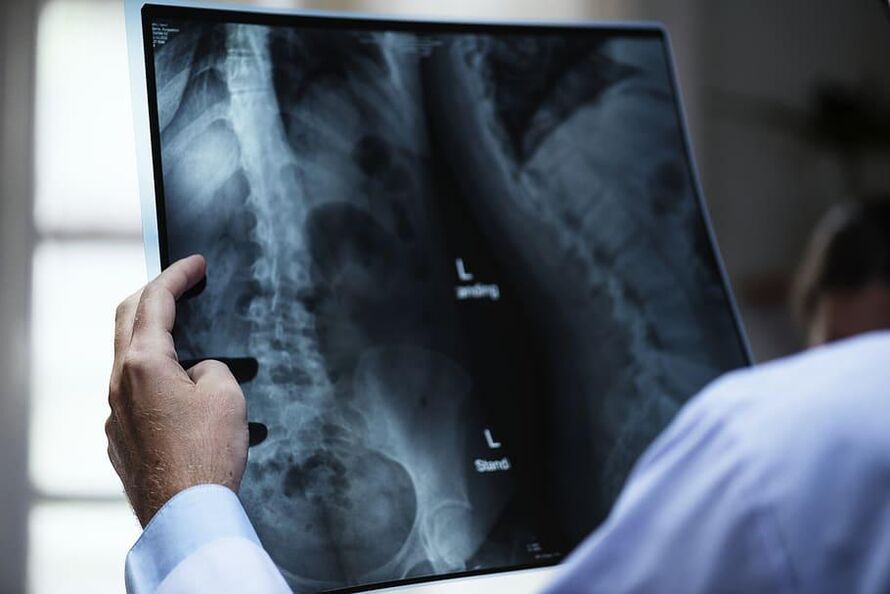Cervical osteochondrosis is a very common disease in the modern world. Many have this at an early stage, but they have no doubt. Wide osteochondrosis of the neck was caused by the fact that people began to sit and move less. Let's look at the causes of this unpleasant disease and the methods of combating it.

What is cervical osteochondrosis?
So, cervical osteochondrosis is a degenerative dystrophic disease of the cartilage tissue of the musculoskeletal system. The disease is characterized by abnormal changes in the cartilage structure, which causes disruption of the anatomical structure of the spine elements, disruption of skeletal mobility, and causes painful sensations. The disease can affect any part of the spine, but due to excessive mobility and miniature spine measures, the cervical segment is most often experienced by this pathology. The neck experiences an impressive load daily. In turn, even the fact of its retention forces the vertebrates and the intervertebral discs to work extensively. From the outside regular impact, the intervertebral drives are thinner, with microconstricts appearing on them. Over time, their height decreases, they begin to change their thickness in a smaller way and stop performing their basic function - spine depreciation.
Causes of cervical osteochondrosis
The causes of the disease are primarily due to the age -related age of the body and the developing destruction of bone and cartilage. The following causes of osteochondrosis can also be called:

- Break
- Reduce motor activity as a result of a seductive lifestyle
- Excess weight as a result of metabolic disorders has a load on intervertebral discs
- Hereditary factor
- Long -term physical activity
- The pathologies of the spine
Symptoms of cervical osteochondrosis
Cervical osteochondrosis has specific manifestations. This is due to the anatomical characteristics of the cervical spine. Most often, patients complain of pain of varying intensity, increasing from long stay in one condition. Other symptoms are often added to the pain:
- Weakness in the upper extremities
- Nodded and hands
- The hardness of moving the head
- Dizziness (suggests that damaged elements have affected the arteries)
- Lips
- Fed a coma feeling
Signs of cervical osteochondrosis
In medicine, signs of osteochondrosis are commonplace, based on the nature of the symptomatic manifestations that are combined with one syndrome. 4 of this syndrome stands out:
- Koreshka - indicates nerve rays that provoke severe pain, as well as a combination of autonomic symptoms (dizziness, weakness, throat tumor);
- Spine artery - Damaged elements prevent the large vertebrate artery, which is the cause of severe headaches, dizziness;
- Vertebral - causes pain in the neck;
- Cardiac - Mask under the angina pectoral attack, which is manifested by severe chest pain, like a heart attack.
Stages of development of cervical osteochondrosis
1 degree of osteochondrosis

It is characterized by the beginning of the destruction of intervertebral discs. Cracks are formed in the fiber rim, the strength and elasticity of the disk is formed, its height decreases, causing nerve roots to contract. There is a characteristic pain. Sometimes such pain may not be in the 1st stage (preclinical), and osteochondrosis occurs with mild discomfort in the neck.
2 degrees of osteochondrosis
If first -degree osteochondrosis is not treated or treatment was not effective, then 2nd degree osteochondrosis occurs - chronic. Pain becomes permanent, intervertebral disc destruction and sealing continues and causes a slight dislocation of the cervical spine. With cervical osteochondrosis, a fallen head syndrome may develop at this stage. This syndrome is characterized by severe pain and a person is forced to support himself in a fixed state to reduce pain.
3 degrees of osteochondrosis
The fibrous link is almost destroyed, causing complications of osteochondrosis - intervertebral disc or intervertebral hernia. In the 3 stages of osteochondrosis, the intensity of pain may be reduced, as the cartilage of the disk is no longer there, which means that there is no source of pain, however, the nerve root molding remains, so the pain does not leave it completely.
Diagnosis of cervical osteochondrosis
If there is a doubt about the presence of cervical osteochondrosis, you need to contact the medical facility in a timely manner. A comprehensive diagnosis will help identify the disease, evaluate its quality and understand the causes of pathology. Pre -diagnosis is made on the basis of inspection and palpation - with osteochondrosis, cervical muscle tension is observed, in some cases the deformation of the spine is noticeable. After an objective diagnosis, the doctor will send the patient additional examinations. The following diagnostic methods are used to confirm the diagnosis:
Pre -diagnosis is made on the basis of inspection and palpation - with osteochondrosis, cervical muscle tension is observed, in some cases the deformation of the spine is noticeable. After an objective diagnosis, the doctor will send the patient additional examinations. The following diagnostic methods are used to confirm the diagnosis:
- Magnetic -resonance tomography
- Radiography (lateral and straight)
- Computed tomography
Ultrasound examination of nearby organs, ECG, blood vessel duplex scan, blood tests and urine can be prescribed to determine the cause of the pathology.
Treatment of cervical osteochondrosis
Treatment of osteochondrosis requires an integrated approach. Painkillers are used for temporary elimination of pain, but the basis of therapy is physical therapy and massage. Massage helps to alleviate muscle hypertension, enhance pain. Procedures also restore normal blood circulation, improve the supply of damaged tissues. Based on the results of the massage course, the voltage is removed from the cervical region, the spine load is distributed. Drug treatment. Medications relieve pain and inflammation, restore blood circulation and eliminate cramps in the neck muscles. The following groups of drugs can be used for this: glucocorticosteroids, analgesics, muscle calmers, etc. Sh. Physiotherapeutic treatment. In addition to taking medicines near the cervical muscles, the elimination of seizures and normalizing blood flow will facilitate physiotherapeutic procedures: acupuncture, laser effect, magnetotherapy, UHF therapy, phonophoresis, etc. Sh.  Therapeutic gymnastics. Special physical exercises will help the patient strengthen the muscle frame, combine posture and improve blood supply to the top of the spinal column. In the case of advanced stages of osteochondrosis of the cervical spine, or with insufficient efficacy of conservative methods, surgery is required.
Therapeutic gymnastics. Special physical exercises will help the patient strengthen the muscle frame, combine posture and improve blood supply to the top of the spinal column. In the case of advanced stages of osteochondrosis of the cervical spine, or with insufficient efficacy of conservative methods, surgery is required.
Prevention of cervical osteochondrosis
To prevent the development of cervical osteochondrosis, it is recommended: When you sit, make sure you take five breaks every hour, avoiding your neck loads; Do not make sharp movements of the head, monitor posture; Avoid hypothermia; Involvement of physical education, swimming; Eat properly; The dream should be on a solid mattress and low pillow, the angle of the neck should not be more than 15 degrees; After 25 years, avoid the shock of the spine (jump, run). In any case, when symptoms appear - be sure to visit your doctor. Don't self -company!















































